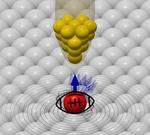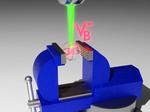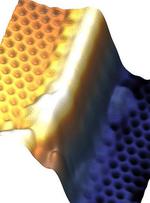Other

“Researchers at the University of Würzburg have developed a method that can improve the performance of quantum resistance standards. It´s based on a quantum phenomenon called Quantum Anomalous Hall effect. The precise measurement of electrical resistance is essential in …

“For the first time, experimental physicists from the Würzburg-Dresden Cluster of Excellence ct.qmat have demonstrated a new quantum effect aptly named the “spinaron.” In a meticulously controlled environment and using an advanced set of instruments, they managed to prove …

“Within the framework of the Würzburg-Dresden Cluster of Excellence ct.qmat, excitons were generated in a topological insulator for the first time. A breakthrough in quantum research, based on material design from Würzburg. An international team of scientists collaborating within …

“Propelling micrometre-sized drones using light only and exerting precise control: Physicists at the University of Würzburg have succeeded at this for the first time. Their microdrones are significantly smaller than red blood cells. A hand-held laser pointer produces no noticeable …

“Würzburg researchers have highlighted and quantified a three-fold coupling between exciton, photon, and phonon in a microcavity with embedded two-dimensional materials. Coupling of phonon (green), exciton (pink), and photon of a microcavity (red) in a 2D material. (Image: Donghai Li …

“Israeli and German researchers have developed a way to force an array of vertical cavity lasers to act together as a single laser - a highly effective laser network the size of a grain of sand. The findings are presented in …

“A new type of atomic sensor made of boron nitride is presented by researchers in “Nature Communications”. The sensor is based on a qubit in the crystal lattice and is superior to comparable sensors. An artificially created spin defect (qubit …

“An international research team has made progress towards improved materials for quantum sensor technology. Medicine, navigation and IT could benefit from this in the future. Boron nitride is a technologically interesting material because it is very compatible with other two-dimensional …

“Two-dimensional materials hold out hope for many technical applications. An international research team now has determined for the first time how strongly 2D materials vibrate when electronically excited with light. Current electronic components in computers, mobile phones and many other …

“It is crucial for photovoltaics and other technical applications, how efficiently energy spreads in a small volume. With new methods, the path of energy in the nanometer range can now be followed precisely. Plants and bacteria lead the way: They …

“Researchers from Würzburg and London have built the foundations for a new field of nano-optics: they have succeeded in controlling the coupling of light and matter at room temperature. Publishing in a journal like Science Advances usually heralds a particularly …

“It’s ultra-thin, electrically conducting at the edge and highly insulating within – and all that at room temperature: Physicists from the University of Würzburg have developed a promising new material. The material class of topological insulators is presently the focus …

